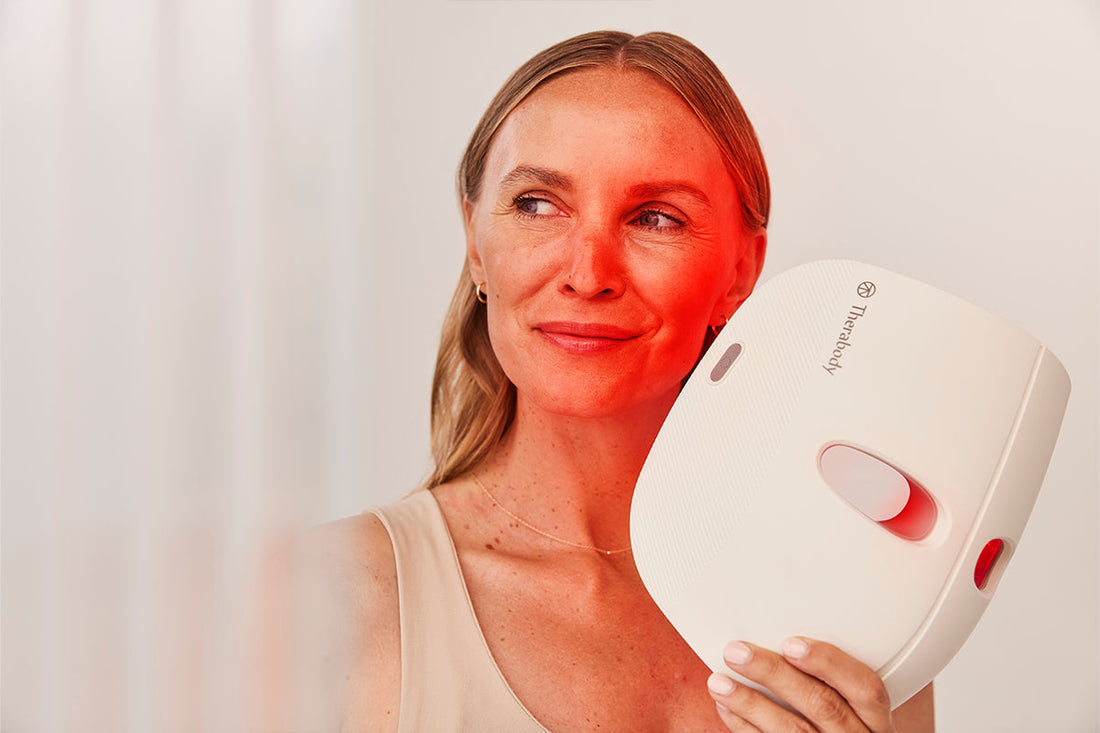
What's Beneath the Skin? The Science of 3 At-Home Skin Therapies
Your skin is more than just a protective barrier — it’s a complex organ with numerous vital functions. As we face increasing environmental stressors and the natural effects of ageing, traditional skincare routines may not address all skin concerns.
Fortunately, advancements in skincare technology have brought professional-grade therapies into our homes. From light-based treatments to temperature and vibration therapies, these innovative approaches target skin cells and tissue at a deeper level.
The TheraFace Mask is a breakthrough TGA Registered LED skincare mask that delivers effective, full face Red, Red + Infrared and Blue light, with added tension-relieving vibration therapy. Let’s explore the therapies it offers and understand how it can benefit your skincare routine.
RED & INFRARED LIGHT THERAPY FOR FINE LINES AND WRINKLES
Light therapy in skincare has exploded in popularity as this technology is now available at home. These handheld devices deliver light to specific areas of the skin for short periods or through a mask that covers the entire face at one time. These devices use light-emitting diodes, or LEDs, that produce various wavelengths of light to stimulate the skin — including the dermis and epidermis. [2, 3]
Red light, the longest wavelength of visible light, ranges from 620 to 750 nm and can penetrate through the skin and target your cells. Red light targets fine lines by increasing collagen production. Collagen is a structural protein that helps maintain the skin’s firmness and elasticity. When collagen production declines (a process that happens naturally with age), your skin loses some of its integrity, and fine lines can form. Environmental factors like sun damage can then accelerate this process. [4]
Red light therapy can support your body’s natural collagen production. Specifically, red light’s wavelength targets the cells’ energy-producing mitochondria in a process called photobiomodulation — increasing energy production. This fuels cellular repair processes, skin rejuvenation, and collagen production. [5]
Red light also targets collagen synthesis more directly by stimulating fibroblasts, the cells responsible for collagen production. [3] It can also be antiinflammatory, creating a more favourable environment beneath the skin for collagen production and skin repair.
Devices often pair red light therapy with infrared light therapy for even more benefits. Infrared light has a longer wavelength than red light therapy (around 830 nm) and can penetrate even deeper into the skin. This high wavelength isn’t visible to the eye — but you can feel it. Infrared light therapy creates a warming sensation on the skin, increasing blood flow to the treatment area. [5]
Research shows that when used together, red light and infrared light therapy can: [5, 6]
• Improve skin tone
• Support collagen production
• Reduce the appearance of fine lines and wrinkles and strong nails.

BLUE LIGHT THERAPY FOR ACNE
On the shorter side of the light spectrum is blue light therapy. This shorter wavelength (about 415 to 450 nm) doesn’t penetrate the skin like red and infrared light but can target its surface. Blue light therapy is recognised for its ability to target the acne-causing bacteria that live on the face. [8]
Acne is a common (and rather persistent) condition that can result from many factors, including bacteria build-up. Having too much bacteria on the face can clog pores. This causes substances to build up and a pimple to form. [9]
Blue light can reduce active acne because, at this wavelength, blue light is absorbed by the acne forming compound that bacteria produce, called porphyrins. Once porphyrins absorb blue light over several days, they release a single oxygen molecule, killing the bacteria and effectively reducing acne. [10]
Blue light therapy is delivered through devices similar to red light therapy. Some technology will have red, infrared, and blue light therapy available within the same device.
VIBRATION THERAPY FOR FACIAL WRINKLES AND PAIN
Vibration therapy uses mechanical vibrations that contact the skin and stimulate different receptors in both the skin and the tissue below it. These rapid oscillations have been shown to reduce pain, improve skin blood flow, and reduce inflammation. [17, 18, 19]
This therapy works by stimulating short-term blood flow. [20] In fact, combining heat and vibration therapy stimulates short-term blood flow to a greater extent than either alone. [21] The gentle, rhythmic vibrations have been shown to increase elastin and collagen and improve sagging. [22]
Furthermore, they have been shown to improve the appearance of facial wrinkles and skin texture when combined with topical skincare. The vibrations enhance the absorption of skincare products, making them more effective. [23]
When choosing a vibration therapy device, look for one with adjustable intensity stories designed for facial skin.







